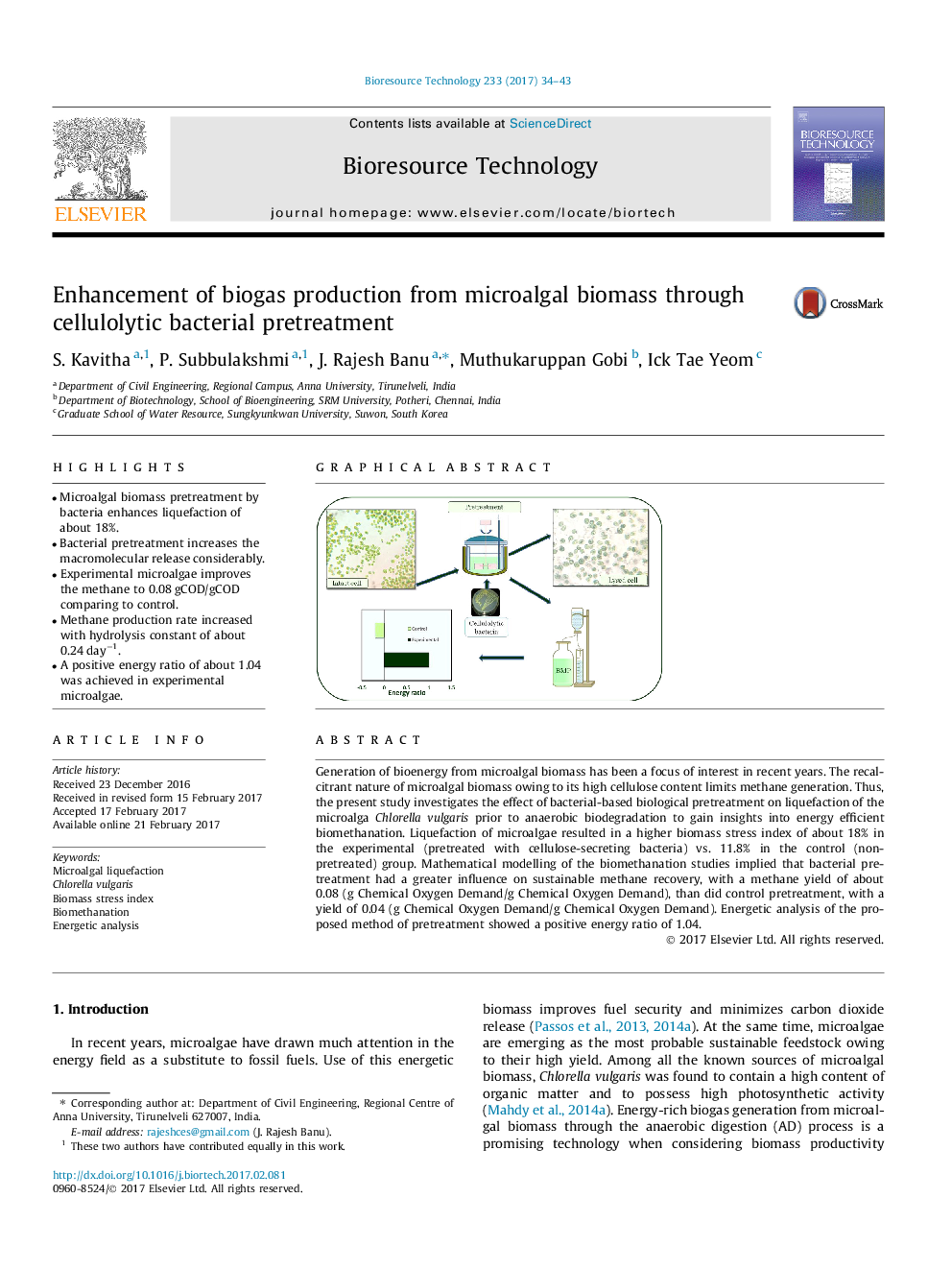| Article ID | Journal | Published Year | Pages | File Type |
|---|---|---|---|---|
| 4997502 | Bioresource Technology | 2017 | 10 Pages |
â¢Microalgal biomass pretreatment by bacteria enhances liquefaction of about 18%.â¢Bacterial pretreatment increases the macromolecular release considerably.â¢Experimental microalgae improves the methane to 0.08 gCOD/gCOD comparing to control.â¢Methane production rate increased with hydrolysis constant of about 0.24 dayâ1.â¢A positive energy ratio of about 1.04 was achieved in experimental microalgae.
Generation of bioenergy from microalgal biomass has been a focus of interest in recent years. The recalcitrant nature of microalgal biomass owing to its high cellulose content limits methane generation. Thus, the present study investigates the effect of bacterial-based biological pretreatment on liquefaction of the microalga Chlorella vulgaris prior to anaerobic biodegradation to gain insights into energy efficient biomethanation. Liquefaction of microalgae resulted in a higher biomass stress index of about 18% in the experimental (pretreated with cellulose-secreting bacteria) vs. 11.8% in the control (non-pretreated) group. Mathematical modelling of the biomethanation studies implied that bacterial pretreatment had a greater influence on sustainable methane recovery, with a methane yield of about 0.08 (g Chemical Oxygen Demand/g Chemical Oxygen Demand), than did control pretreatment, with a yield of 0.04 (g Chemical Oxygen Demand/g Chemical Oxygen Demand). Energetic analysis of the proposed method of pretreatment showed a positive energy ratio of 1.04.
Graphical abstractDownload high-res image (82KB)Download full-size image
